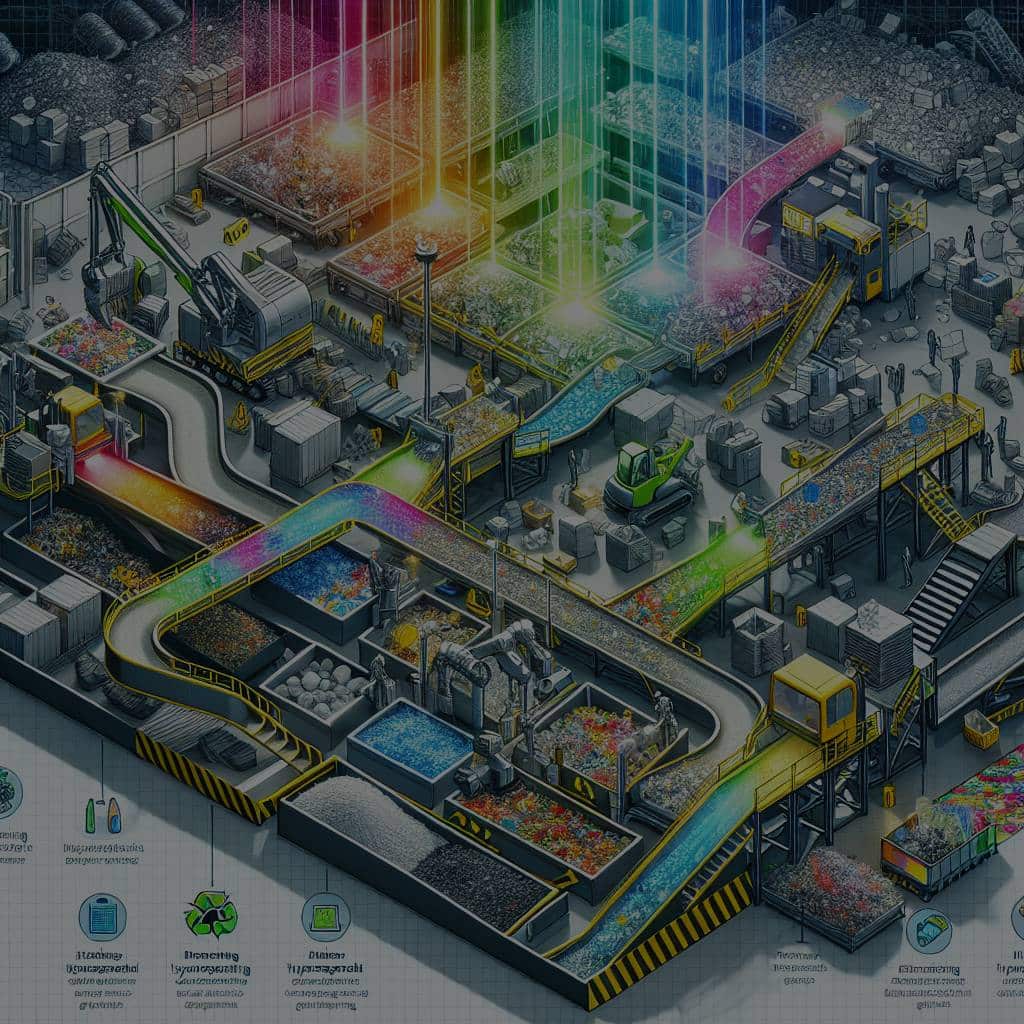What Role Can Hyperspectral Imaging Play in Recycling Sortation Systems?

With rising environmental concerns and increasing demand for sustainable solutions, the recycling industry is under immense pressure to improve its processes and technologies. Amongst the various technological advancements, hyperspectral imaging (HSI) has emerged as a promising tool, catering to the need for efficient and effective recycling procedures. This article aims to shed light on the role of hyperspectral imaging in recycling sortation systems, with a focus on its capability in sorting waste materials, especially plastics.
Understanding Hyperspectral Imaging and Its Functioning
Before we delve into the role of hyperspectral imaging in recycling systems, it is crucial to gain an understanding of what HSI is and how it functions. Commonly referred to as spectroscopic imaging, hyperspectral imaging involves capturing and processing information from across the electromagnetic spectrum. Unlike traditional imaging systems, HSI uses a multitude of spectral bands, allowing it to provide a ‘spectrum for each pixel’ in the image. This unique ability gives HSI the power to identify materials based on their spectral properties.
In parallel : How do I generate images for tutorials or practical guides ?
Hyperspectral imaging systems typically consist of a hyperspectral camera and a computer that runs the imaging software. The camera captures images across the electromagnetic spectrum, often focusing on the Near-Infrared (NIR) region, and the software processes these images to provide data-rich spectral analysis.
Hyperspectral Imaging in Waste Sorting
Implementing hyperspectral imaging in waste sorting can significantly enhance the efficiency and effectiveness of recycling systems. Currently, waste sorting, especially of plastics, can be a complex and challenging task due to the myriad of different materials and their mixed nature. However, HSI can be a game-changer in this aspect.
Also read : Can Voice-Activated AI Provide Real-Time Cooking Assistance in Smart Kitchens?
Hyperspectral cameras can be used to scan the waste on conveyor belts, capturing images that span several spectral bands. The NIR spectrums are particularly useful for identifying different types of plastics based on their chemical composition. The images and spectral data collected by the camera are then analysed by the imaging software, which can differentiate between and classify different types of waste materials based on their spectral signatures.
The HSI system can thus identify individual waste items, classify them into distinct categories (such as PET plastic, HDPE plastic, cardboard, etc.), and instruct the automated sorting equipment to separate the waste accordingly.
Beneficial Applications of Hyperspectral Imaging in Recycling
The use of hyperspectral imaging in recycling systems is not restricted to waste sorting alone. Its utilization holds potential in several other applications that can profoundly enhance the efficacy and sustainability of recycling operations.
One such application is in contaminant detection. Impurities or contaminants in the recycling stream can affect the quality of the recycled materials and pose significant challenges to recyclers. Hyperspectral imaging can identify such contaminants, which are often invisible to the naked eye, allowing recyclers to remove them before they enter the recycling process.
Another application is in quality control. With hyperspectral imaging, recyclers can monitor the quality of the sorted materials and the recycled products. The detailed spectral data provided by HSI enables recyclers to determine the purity and consistency of the materials, thus ensuring that the recycled products meet the desired standards.
The Future of Hyperspectral Imaging in Recycling Sortation Systems
Looking at the benefits and potential applications, it is clear that hyperspectral imaging holds a promising future in recycling sortation systems. By enabling precise sortation and quality control, HSI can play a significant role in improving the efficiency, effectiveness, and sustainability of recycling operations.
Moreover, as technology continues to advance, the capabilities of hyperspectral imaging are expected to further expand. Improvements in camera technology, imaging software, and data analysis techniques are likely to enhance the performance of HSI systems and broaden their application range.
However, it should be noted that the widespread adoption of hyperspectral imaging in recycling systems may face challenges. These could include the high cost of HSI systems, technical complexities, and the need for expertise in spectral data analysis. Therefore, efforts should be made to address these challenges and facilitate the integration of HSI into recycling systems.
In conclusion, hyperspectral imaging holds immense potential in recycling sortation systems. As a powerful tool for waste sorting, contaminant detection, and quality control, HSI can significantly contribute to the advancement of recycling technologies and the promotion of sustainable waste management.
Integration of Hyperspectral Imaging and Machine Learning for Enhanced Recycling
The integration of hyperspectral imaging and machine learning has the potential to take waste management and plastic recycling to a whole new level. The vast spectral data collected through HSI can be processed in real time using advanced machine learning algorithms, resulting in improved identification and classification of waste materials.
Machine learning, a subset of artificial intelligence, involves the use of computer algorithms that improve automatically through experience. In the context of hyperspectral imaging, machine learning can be used to analyze the complex spectral data and derive meaningful insights from it.
For instance, deep learning, a type of machine learning, can be employed to analyze the hyperspectral images captured by the hyperspectral camera. The deep learning models can be trained to recognize the unique spectral signatures of different types of waste materials, allowing for more accurate and efficient waste sorting.
Moreover, with machine learning, the hyperspectral imaging system can continuously learn and improve over time. As the system processes more and more data, it becomes better at identifying and classifying waste materials, thus enhancing the overall efficiency of the recycling process.
Incorporating machine learning can also help optimize the use of hyperspectral imaging in other areas of recycling, such as contaminant detection and quality control. For instance, machine learning algorithms can be used to detect subtle variations in the spectral data that may indicate the presence of contaminants. Similarly, they can be used to monitor the quality of the sorted materials and the recycled products in real time.
Conclusion: Hyperspectral Imaging Towards a Circular Economy
The integration of hyperspectral imaging in recycling sortation systems marks a significant step towards the realization of a circular economy. By enhancing the efficiency and effectiveness of waste sorting, HSI can facilitate the recovery of valuable resources from post-consumer waste, thereby promoting waste recycling and sustainable waste management.
Moreover, the potential applications of hyperspectral imaging in contaminant detection and quality control can further improve the quality of recycled products and ensure their suitability for use in the production of new goods.
However, to fully harness the potential of hyperspectral imaging, it is crucial to address the associated challenges. These include the high cost of hyperspectral cameras, the technical complexities of hyperspectral image analysis, and the need for expertise in spectral data and machine learning. Continued research and development, as evidenced by numerous studies published on Google Scholar, can help overcome these challenges and facilitate the wider adoption of HSI in recycling systems.
In summary, hyperspectral imaging represents a powerful tool that can significantly enhance the efficiency, effectiveness, and sustainability of recycling sortation systems. As technological advancements continue to expand its capabilities, HSI is set to play an increasingly important role in the journey towards a circular economy.
